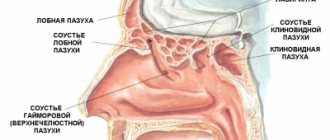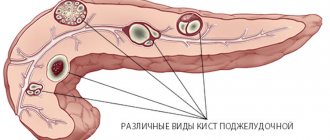How does the reaction occur?
How quickly an allergen can trigger an immune response depends on its ability to bind to the protein compounds contained in the skin.
For example, dinitrochlorobenzene (a very strong allergen) binds to proteins containing the amino acids lysine and cysteine and forms an antigen. Macrophages (Langerhans cells), which respond to the penetration of foreign components into the body, begin to form an immune response, which leads to an inflammatory reaction. Some T-lymphocytes turn into memory cells during their work, which is why upon subsequent contact with the allergen, the reaction occurs again. Among medical drugs and products, allergic manifestations are most often caused by antiseptics, local anesthetics, and latex products.
Causes
Allergic dermatitis is provoked by any substances and materials individually for each person, but there are several groups of substances due to which the problem occurs more often.
The main reasons for the development of the reaction:
- metal alloys, which include nickel, cobalt, chromium - jewelry, kitchen utensils, rivets/clasps, keys, dental crowns, braces, staples and pins for osteosynthesis;
- latex – condoms, gloves;
- ethylenediamine hydrochloride - some drugs, antihistamines;
- formaldehyde – insecticides, cosmetics, workwear;
- chlormethylisothiazolinone – found in cosmetics;
- anesthetics in the form of creams, sprays.
Akriderm preparations for dermatoses
Akriderm ointments and creams are combination preparations that contain several active substances at once, which provide comprehensive treatment for dermatitis of allergic and non-allergic nature. They provide:
- antipruritic effect;
- anti-inflammatory effect;
- antiallergic effect;
- vasoconstrictor effect.[6]
This therapeutic effect was achieved thanks to a thoughtful combination of glucocorticosteroids with broad-spectrum antibiotics and antifungal components. Akriderm ointments and creams not only fight redness, itching and swelling, but also protect the skin from bacterial and fungal infections.
In the fight against contact dermatitis (simple and allergic), it is advisable to use the following Akriderm preparations:
- Akriderm SK ointment contains salicylic acid, due to which it acts quickly and has a favorable safety profile.
- Akriderm GENTA ointment is used for chronic skin pathologies, in particular those complicated by secondary infection.
- Ointment or cream "Akriderm GK" - used for acute and chronic inflammation to suppress unpleasant symptoms
- Ointment or cream "Akriderm" - thanks to the thoughtful concentration of active substances, can also be used for children over 1 year of age.[7]
links to sources
- Contact dermatitis - Clinical guidelines, Russian Society of Dermatovenereologists and Cosmetologists, 2021.
- Dikovitskaya I.G., Korsunskaya I.M., Nevozinskaya Z. Contact dermatitis: clinical picture and therapy // Sovrem. problems of dermatovenerology, immunology and medicine. cosmetology. 2010. T. 4. No. 4. pp. 49–51.
- Stepanova E.V. Allergic contact dermatitis: basic approaches to diagnosis, treatment and prevention // Attending physician. - 2009. - No. 10. - P. 15-19.
- Mercedes E. Gonzalez, “Contact dermatitis” MD, University of Miami Miller School of Medicine.
- Batyrshina S.V. Glucocorticosteroids for local use in the modern strategy for the treatment of inflammatory dermatoses in pediatric practice // Practical Medicine, 2014. No. 9 (85). pp. 94–102.
- Federal clinical guidelines. Dermatovenereology 2015: Skin diseases. Sexually transmitted infections. – 5th ed., revised. and additional – M.: Business Express, 2021. – 768 p. 3. Instructions for use of the medicinal product for medical use Akriderm®. No. Reg. beat LS-002317, R N000663/01.
- Instructions for medical use Akriderm®
Symptoms
Allergic dermatitis most often occurs in older children and middle-aged adults. All appearances are divided into two groups of three subgroups:
- acute, subacute and chronic;
- mild, moderate and severe.
The primary reaction can appear 10-14 days, and sometimes several years after regular exposure to the allergen, if it is weak. A repeated reaction may occur within 12-72 hours.
Main symptoms:
- itchy sensations;
- swelling and redness at the site of contact;
- the appearance of vesicles and bubbles against the background of hyperemia;
- vesicle formation;
- in place of the opened bubbles, weeping erosions appear;
- erosions heal, crusts and scales appear.
The step-by-step process described above is characteristic of the acute form of the disease; in the chronic form, the process proceeds a little differently - it begins with papules, then peeling appears, and lastly excoriation (scratching). If the substance stimulating the reaction was a very serious allergen (for example, poison), general symptoms of intoxication may appear: headache, fever and weakness.
Symptoms appear in the place where there was contact with the allergen. For this reason, this dermatitis does not show symmetrical manifestations on the arms and legs, and its causative agent is easy to identify. Occupational allergies manifest themselves on the hands - palms, sides of the hands, skin between the fingers, forearms. If the problem is caused by jewelry or fasteners, then the manifestation will be noticed at the point of contact with them.
Contact dermatitis, when it first appears, is clearly visible at the site of contact with the skin, so its cause is easy to determine. With subsequent exacerbations, redness with papules may appear in any other place on the body, which causes much more inconvenience to patients. If with a single contact the disease can be eliminated after 1-3 weeks, it may take months to enter the chronic stage.
Complications of dermatitis
Any form of dermatitis accompanied by skin damage can be complicated by infection.
In the chronic course of the disease, thinning of the skin and the appearance of small dilated vessels - telangiectasia - are possible. With prolonged atopic dermatitis, a child may develop asthma and allergic rhinitis. Among the adverse consequences of the seborrheic form of the disease are acne with the formation of visible skin defects, abscess, and baldness. The most serious are considered generalized complications such as Quincke's edema, Lyell's syndrome or Stevens-Johnson syndrome.
Diagnostics
The disease is diagnosed after examination and skin patch tests. Applications with allergens are applied to the patient's skin for a period of 48-72 hours, after which the doctor evaluates the reaction. So that the patient can tolerate the procedure normally, the material is applied to convenient places - the inner side of the forearm, the outer surface of the shoulder or between the shoulder blades.
How the test is carried out:
- the skin is disinfected;
- the materials under study are superimposed on it, deposited on one common base;
- the application is fixed.
The materials were collected using a standard test system. It consists of one or two plates, 24 and 12 allergens, respectively. Depending on the manufacturer, the system may look different, for example, allergens may be included in a hydrophilic gel that is soaked in sweat. After the application is removed, wait 30 minutes before assessing the results. If the result is positive, the intensity is measured.
Skin test intensity options:
- erythema;
- papules;
- bubbles;
- severe swelling.
The causes of erythema are not always allergies; it may be a reaction to local irritation. This reaction goes away within a few hours. True allergies last 3-7 days. It is also necessary to exclude the fact that the cause of sensitization may be another irritant not used in the application, therefore a physical examination and history taking should be included in the diagnosis. The test is not performed when contact dermatitis is in the acute phase and is very widespread, in order to avoid a false positive result.
Before starting treatment, it is important to differentiate between several types of dermatitis:
- simple contact - the main difference is that the symptoms are visible immediately, and not after a few days;
- seborrheic – oily skin, there are sebaceous crusts that flake off profusely, in most cases nothing itches;
- atopic dermatitis - itching occurs before the rash, is localized on the folds of the arms and legs symmetrically (on both arms or legs at once), there is no sequence “erythrema - papule - vesicle”, as a rule, the most common manifestations of this dermatitis are in children;
- dermatitis caused by UV rays;
- contact urticaria.
Sometimes several types of dermatitis can be combined in one person, an allergist also always remembers this.
Chatterbox
Prepare a semi-alcohol solution: to do this, dilute 40 ml of alcohol with the same volume of water. Add 2 ml of 2% lidocaine or novocaine to the resulting solution - this will help relieve the painful symptom.
Add 30 g of dry white clay and the same amount of powdered zinc. Mix thoroughly until smooth.
The finished mash is applied to the affected skin, previously cleaned with an antiseptic, in a thin layer, the mixture is left on the skin for 20 minutes. There is no need to apply a bandage on top; excess talker can be carefully removed, and the remaining part on the skin forms a protective film.
Remember! Do not self-medicate, consult a doctor!
Cutaneous dermatitis is a general name for skin disorders caused by various irritants. All irritants can be divided into 2 large groups: those that cause irritation upon direct contact and those that affect the body when they get inside.
Sources:
- Molochkova Yulia Vladimirovna, Dermatology. Brief reference book, publishing house: GEOTAR-Media, 2017
- Baumann Leslie, Cosmetic Dermatology. Principles and practice, publishing house: MEDpress-inform, 2016
- Ratner Desiri, Avram M.R., Avram M.M., Procedures in Dermatology. Clinical cosmetology, Publishing house: GEOTAR-Media, 2019
- Sukolin Gennady Ivanovich, Clinical dermatology. A short guide to the diagnosis and treatment of dermatoses, publishing house: Notabene, 2017
Photos of dermatitis
Photo album on the diseaseTreatment
The basis of any treatment is a complete ban on contact with the allergen. Other measures are taken in relation to local manifestations that cause inconvenience to the patient:
- in the presence of swelling and weeping wounds, use wet-dry dressings, after removing which glucocorticoids are applied;
- in the presence of large blisters, puncture (the skin is not removed), after which bandages with Burov’s liquid are applied to the areas of the rash, which are changed every 2-3 hours;
- use of local corticosteroids for a course of up to 14 days with a frequency of 1-2 times a day (the latest generation drugs are used that do not contain fluoride, they are safe and do not lead to changes in the skin);
- administration of systemic corticosteroids (in severe cases);
- additional prescription of antihistamines that help relieve itching and swelling, taken in a course once a day for 10 days.
Treatment of dermatitis should take into account the possibility of wound infection with staphylococcal and streptococcal infections. The doctor should prescribe appropriate prophylaxis. The prognosis of the disease is favorable. The allergist is faced with the task of informing the patient about the causative factors and nature of the disease, so that in the future he can avoid relapses of dermatitis.
Ointment "La-Cri" - a reliable assistant
To care for affected skin, either alone or in combination with ongoing therapy, we recommend using La Cree cream. This is a non-hormonal product that does not contain dyes or fragrances, and therefore is suitable even for newborns, nursing and pregnant women.
The natural composition of the cream is selected in such a way as to simultaneously solve all the problems of irritated skin. The product perfectly relieves redness and itching, promotes rapid regeneration of damaged skin, nourishes and softens even very dry and flaky skin.
As an auxiliary product, you can use the non-greasy emulsion “La-Cri”, which provides gentle care for the skin, moisturizing it and protecting it from drying out. Treatment of dermatitis on the face will be faster with La-Cri washing gel, which gently cleanses delicate skin without clogging pores.
Experts' opinion
The conducted clinical study proves the high efficiency, safety and tolerability of products for daily skin care of children with mild and moderate forms of atopic dermatitis and during remission, accompanied by a decrease in the quality of life of patients. As a result of therapy, a decrease in the activity of the inflammatory process, a decrease in dryness, itching and flaking was noted.
The products are recommended by the St. Petersburg branch of the Union of Pediatricians of Russia.
It has been empirically proven that La Cree emulsion moisturizes and nourishes the skin, relieves itching and irritation, and also soothes and restores the skin.
Prevention
To prevent contact dermatitis, you need to pay attention to medications that are highly allergenic, including furatsilin, antihistamines, and topical anesthetics. Persons frequently in contact with low molecular weight substances are advised to use gloves, protective clothing and moisturizers.
After identifying the allergen, it is necessary to prepare a comprehensive list of drugs, objects, and substances that should not come into contact. If you are allergic to fasteners and rivets of clothing, it is recommended to seal them on the reverse side with a plaster or cover them with fabric. If you are allergic to latex, you should avoid wearing gloves and latex condoms. If you are allergic to formaldehyde or other components of cosmetics, you must carefully study the packaging of purchased cosmetics.
Sign up for a study at the NEARMEDIC clinic
NEARMEDIC became the first private clinic in the capital to receive the Quality Mark and the Moscow Quality award. In the NEARMEDIC network of clinics, treatment is carried out by experienced immunologists-allergists and dermatologists with specialized qualifications and many years of practice. In clinics you can undergo laboratory diagnostics.
Specialists will conduct a full examination of children and adults, including not only skin tests, but also taking an anamnesis and a full comprehensive examination of the body. This makes it possible to exclude the total effect of different substances or the absence of an allergen in standard test systems. The allergist will select desensitizing therapy and develop a plan of preventive measures. Within 1-3 weeks, the unpleasant symptoms will subside and the treatment will be completed.
To make an appointment yourself or to register your children for an appointment, use the form on the website or call us. We will help you choose a convenient time and answer all your questions.





